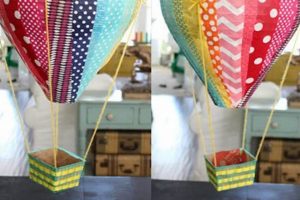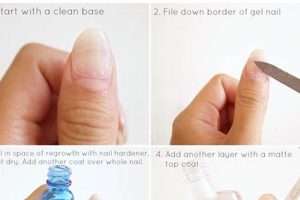A do-it-yourself solution for protecting and updating upholstered furniture, this project entails creating a custom fabric casing for a sofa. It allows individuals to personalize their living spaces without the expense of professional upholstery services. For example, a worn or outdated sofa can be given a fresh, modern appearance with carefully selected fabric and basic sewing skills.
The advantages of this approach include cost savings, the opportunity for creative expression, and the ability to extend the lifespan of existing furniture. Historically, crafting replacements for worn textiles was a common household practice, predating readily available mass-produced furniture covers. This method provided a means to preserve valuable furnishings and adapt them to changing styles or needs.
The subsequent discussion will detail the materials required, the necessary steps for accurate measurement and pattern creation, and essential sewing techniques for successfully completing such a project. Further, it will address common challenges and offer practical advice for achieving a professional finish.
DIY Sofa Cover
The following are essential considerations for achieving a successful outcome when creating a bespoke furniture protector.
Tip 1: Fabric Selection is Paramount. The chosen material should be durable, washable, and suitable for upholstery. Consider heavier weight fabrics like canvas, denim, or twill for increased longevity and resistance to wear. Pre-washing the fabric is essential to prevent shrinkage after the cover is complete.
Tip 2: Accurate Measurements are Crucial. Precise dimensions of the sofa are necessary for a well-fitting cover. Measure all sides, including the height, depth, and width of the cushions and frame. Add extra allowance (typically 1-2 inches) for seams and potential adjustments. Creating a scaled diagram can aid in visualization and pattern planning.
Tip 3: Pattern Creation Requires Precision. For complex sofa shapes, consider creating a muslin mock-up to test the fit before cutting the final fabric. This allows for adjustments and minimizes the risk of wasting expensive materials. Mark seam lines and notches clearly on the pattern pieces.
Tip 4: Seam Reinforcement is Essential. Use a strong stitch, such as a reinforced straight stitch or a zig-zag stitch, to secure seams. This will prevent unraveling and ensure the cover can withstand regular use. Consider serging or overlocking the edges of the fabric to further prevent fraying.
Tip 5: Zipper or Closure Placement Matters. Carefully plan the placement of zippers, buttons, or other closures. Hidden zippers are generally preferred for a clean, professional look. Ensure the closure is long enough to allow for easy removal and replacement of the cover.
Tip 6: Cushion Covers Demand Attention to Detail. When creating cushion covers, measure the cushions precisely and add seam allowances. Use a zipper or envelope closure for easy removal and cleaning. Consider adding piping or welting along the edges for a more tailored appearance.
Tip 7: Ironing is a Critical Finishing Step. Pressing seams open after sewing creates a smoother, more professional finish. Iron the completed cover thoroughly before placing it on the sofa to remove wrinkles and creases.
Employing these strategies enhances the durability, aesthetics, and overall success of the upholstery solution. Careful planning and execution are essential for a satisfying outcome.
The subsequent section will address common mistakes and troubleshooting strategies for resolving typical difficulties encountered during such projects.
1. Accurate measurement
Accurate measurement forms the foundational element for a successful project. The dimensions obtained dictate the size and shape of all pattern pieces. Insufficient or incorrect measurements inevitably lead to a final product that either fails to fit the sofa properly or lacks the desired aesthetic appeal. Consider, for example, a scenario where the depth of the sofa is underestimated; the resulting fabric would be too shallow to fully cover the back, leaving portions exposed. In contrast, overestimating dimensions results in excess fabric, creating a baggy and unprofessional appearance. The direct consequence of measurement error is therefore a compromised final result.
The practical significance extends beyond mere aesthetics. A poorly fitted cover can accelerate wear and tear on the furniture itself. For instance, a cover that is too tight may place undue stress on the seams, causing them to rip prematurely. Similarly, an excessively loose cover may slide and bunch, creating friction that damages the sofa’s original upholstery. In either case, the protective function of the covering is undermined by inaccurate measurements, increasing the likelihood of damage to the furniture the cover is intended to safeguard. Real-world cases frequently demonstrate these outcomes, with ill-fitting creations requiring extensive alterations or complete abandonment, resulting in wasted resources and effort.
In summary, accurate measurement is paramount due to its direct impact on the fit, appearance, and protective function of the finished product. The primary challenge lies in obtaining precise dimensions of complex sofa shapes, often requiring multiple measurements and careful consideration of curves and angles. Overcoming this challenge necessitates meticulous attention to detail and the use of appropriate measuring tools. A firm grasp of the interplay between measurement accuracy and the ultimate quality of the project is essential for realizing the intended protective and aesthetic benefits.
2. Durable fabric choice
Fabric selection is a critical determinant of the success and longevity of a do-it-yourself project. The chosen material directly impacts the cover’s resistance to wear, ease of maintenance, and overall appearance. Selecting a fabric that is not sufficiently durable can negate the time and effort invested in its creation.
- Resistance to Abrasion
A primary consideration is the fabric’s ability to withstand abrasion from regular use. Fabrics with high abrasion resistance, such as canvas or denim, will maintain their appearance and structural integrity for a longer period. Conversely, delicate fabrics like silk or thin cotton are prone to tearing and fading, rendering them unsuitable for high-traffic areas. For instance, a cotton duck fabric, properly chosen with a high thread count, can withstand daily use, whereas a thin linen will quickly show signs of wear.
- Colorfastness and Fade Resistance
Exposure to sunlight can cause significant fading in some fabrics. Choosing materials with inherent colorfastness or that have been treated to resist fading is crucial, particularly for sofas located near windows. Solution-dyed acrylics and certain polyester b
lends offer superior fade resistance compared to natural fibers. The consequences of inadequate colorfastness can include uneven fading, resulting in an aesthetically displeasing and unprofessional appearance. A real-world example would be comparing a vibrant outdoor fabric to a standard interior cotton placed in direct sunlight over a period of months; the outdoor fabric would retain its color far longer. - Cleanability and Stain Resistance
The ease with which a fabric can be cleaned is a practical consideration, especially in households with children or pets. Fabrics labeled as stain-resistant or that can be easily spot-cleaned are preferable. Microfiber, for example, is known for its cleanability. Certain treatments can also be applied to fabrics to enhance their stain resistance. Neglecting this aspect can lead to permanent stains and a reduction in the cover’s lifespan. For instance, consider the ease of removing a coffee stain from a treated microfiber versus an untreated cotton velvet.
- Shrinkage and Stretching
The dimensional stability of a fabric is essential to ensure that the finished remains its intended size and shape after washing or use. Pre-shrinking fabrics before cutting and sewing is crucial to minimize shrinkage. Additionally, fabrics with minimal stretching properties prevent the cover from becoming baggy or misshapen over time. Natural fibers like cotton and linen are prone to shrinkage, whereas synthetic blends often exhibit greater dimensional stability. An example would be a 100% cotton fabric shrinking significantly after washing, making the cover too small, compared to a polyester blend retaining its size.
These properties of durable fabric choices must be carefully considered when embarking on such DIY work. The longevity and visual appeal are heavily dependent on making the correct choice. By addressing all of these considerations, the craftsman significantly enhances the utility and aesthetic value of the project.
3. Reinforced seam strength
Seam integrity is a critical factor determining the lifespan and performance of a do-it-yourself sofa cover. Adequate seam reinforcement directly mitigates the risk of seam failure under stress, a common point of vulnerability in upholstered furniture. The cause-and-effect relationship is straightforward: insufficient reinforcement results in weakened seams, which are then prone to tearing or unraveling, particularly in areas subject to frequent use or tension, such as the seat cushions or armrests. Its importance stems from its function in maintaining the cover’s structural integrity, aesthetic appeal, and protective capabilities. A real-life example would be a cover constructed with basic straight stitches, which might quickly fail along the cushion seams due to the stress of repeated sitting, whereas a cover using reinforced stitches or serged edges would exhibit greater resilience.
The practical significance of understanding reinforced seam strength extends to the selection of appropriate sewing techniques and materials. Utilizing a durable thread, such as heavy-duty polyester or nylon, is essential. Furthermore, employing techniques like backstitching at the beginning and end of each seam, using a zig-zag stitch for added elasticity, or incorporating serged or overlocked edges to prevent fraying significantly enhances seam durability. Applying seam tape or binding can provide an additional layer of reinforcement, particularly in areas subject to high stress. Ignoring these techniques can lead to premature wear, requiring frequent repairs or complete replacement of the cover. Professional upholstery often utilizes these methods to ensure longevity, demonstrating their effectiveness in demanding applications.
In conclusion, reinforced seam strength is not merely a desirable feature but an essential component of a durable and functional sofa cover. The challenge lies in selecting and implementing appropriate techniques and materials based on the specific fabric, intended use, and stress points of the project. A focus on seam reinforcement translates directly into an increased lifespan, improved aesthetic appeal, and enhanced protective function, ultimately maximizing the value and minimizing the long-term cost of the endeavor.
4. Precise pattern fitting
Precise pattern fitting is intrinsically linked to the success of any do-it-yourself sofa cover project. The quality of the fit directly determines the final appearance, comfort, and overall functionality of the cover. Ill-fitting patterns manifest as unsightly bunching, sagging, or pulling of fabric, detracting from the aesthetic value of the furniture and potentially accelerating wear and tear on both the cover and the underlying sofa. This connection emphasizes that accurate pattern creation is not merely a technical detail but a foundational element influencing the project’s ultimate outcome. For example, a pattern piece that is too small for a sofa armrest will result in a tight, stressed seam that is likely to fail under normal use, while a piece that is too large will create excess fabric that bunches unattractively.
The practical application of understanding this connection involves meticulous measurement, pattern drafting, and iterative fitting. Creating a muslin mock-up before cutting the final fabric allows for adjustments and corrections, minimizing the risk of costly errors. Draping fabric directly onto the sofa and marking seam lines ensures a closer, more accurate fit than relying solely on measurements. Incorporating ease, or slight additional fabric, in strategic areas such as the seat cushions allows for comfortable movement and prevents excessive stress on the seams. Skilled pattern makers often employ techniques like dart manipulation to shape the fabric around curves and contours, resulting in a smoother, more tailored appearance. The absence of such precision leads to a final product that looks amateurish and may not provide adequate protection for the sofa.
In summary, precise pattern fitting is paramount to a successful covering. The challenge lies in achieving a balance between a snug, tailored fit and sufficient ease for comfort and durability. Overcoming this challenge requires patience, attention to detail, and a willingness to make adjustments throughout the construction process. A well-fitted cover enhances both the appearance and longevity of the sofa, demonstrating the critical role of accurate pattern design in the broader context of creating quality, custom furniture coverings.
5. Secure closure design
The functionality and aesthetic appeal of a do-it-yourself sofa cover are significantly influenced by the design of its closure. A well-executed closure system ensures a snug fit, facilitates easy removal for cleaning, and contributes to the overall visual harmony of the finished product.
- Zipper Placement and Type
The strategic placement of zippers is critical for both accessibility and concealment. Hidden zippers, often sewn along seams at the back or sides of the sofa, provide a clean, uninterrupted aesthetic. The type of zipper also matters; heavy-duty zippers with robust teeth and sliders are more durable and
less prone to failure than lightweight options. A poorly chosen or positioned zipper can detract from the overall appearance and functionality, making removal and replacement difficult. Real-world examples include using a zipper that is too short, leading to strain and eventual breakage, or placing a zipper in a high-stress area, increasing the likelihood of it separating. - Button and Loop Systems
Button and loop closures offer an alternative to zippers, providing a classic aesthetic and a secure fit. The spacing and size of the buttons must be carefully considered to distribute tension evenly across the closure. Reinforcing the buttonholes is essential to prevent tearing. This closure design is particularly suitable for sofa covers with a rustic or traditional style. An instance of ineffective design involves using buttons that are too small or spaced too far apart, resulting in gapping and an insecure fit. Proper reinforcement is key to prevent buttonholes from fraying and compromising the closure’s integrity.
- Hook and Loop Fasteners (Velcro)
Hook and loop fasteners offer a quick and convenient closure option. However, their use requires careful consideration of the fabric and placement. The adhesive backing must be strong enough to adhere securely to the cover material, and the fastener itself should be durable enough to withstand repeated use. While offering ease of use, hook and loop closures can be less aesthetically pleasing than zippers or buttons if not properly concealed. Real-world failures include the adhesive failing, causing the fastener to detach, or the hooks becoming clogged with lint, reducing their effectiveness.
- Tie Closures
Tie closures provide an adjustable and decorative element to the sofa cover. Fabric ties can be strategically placed along the edges or corners, allowing for a customized fit. The fabric used for the ties should be durable and resistant to fraying. While offering a unique aesthetic, tie closures may be less secure than zippers or buttons, particularly in areas subject to significant movement or pressure. Examples of design flaws include using ties that are too short to be securely fastened or failing to reinforce the attachment points, leading to tearing.
These facets highlight the importance of thoughtful design and execution when creating closure systems for crafted furniture covers. The choice of closure type, its placement, and the materials used all contribute significantly to the overall success and longevity of the project. Consideration of these factors ensures a final product that is not only aesthetically pleasing but also functional and durable.
6. Cushion detail precision
The level of precision applied to cushion details directly influences the aesthetic appeal, comfort, and longevity of a do-it-yourself sofa cover. A lack of attention to these details can detract from the overall quality of the project, regardless of the care taken with other aspects.
- Accurate Measurement of Cushion Dimensions
Precise measurement of cushion dimensions is paramount. Variations, however slight, can result in ill-fitting covers that either sag unattractively or strain against the seams. The implication of inaccurate measurements manifests as discomfort for the user and increased stress on the cover, potentially leading to premature wear. Real-world examples include covers that are too tight to allow for comfortable seating or covers that are too loose, creating unsightly wrinkles and shifting during use.
- Seam Alignment and Symmetry
Consistent seam alignment and symmetry are essential for a professional-looking finish. Misaligned seams or asymmetrical designs detract from the visual appeal and indicate a lack of craftsmanship. These issues can be particularly noticeable in patterned fabrics, where mismatched patterns highlight the inaccuracies. Inconsistencies in seam alignment can also affect the structural integrity of the cover, leading to uneven wear and potential seam failure. Consider a cover where the seams are not aligned, resulting in a distorted appearance and reduced comfort.
- Closure Integration: Zippers, Buttons, or Ties
The integration of closures, such as zippers, buttons, or ties, requires careful consideration. A poorly integrated closure can be visually distracting and functionally problematic. Zippers that are not properly concealed detract from the clean lines of the cover, while buttons that are loosely attached or ties that are unevenly spaced diminish the overall aesthetic. Functionally, a poorly integrated closure may be difficult to operate or prone to failure. Examples include zippers that snag, buttons that detach, or ties that come undone, compromising the security and appearance of the cover.
- Piping and Edge Detailing
The inclusion of piping or other edge detailing can significantly enhance the visual appeal of cushion covers. However, these details require meticulous execution. Uneven or poorly attached piping can create a distracting and unprofessional look. Similarly, inconsistent edge detailing can undermine the overall symmetry and balance of the design. The benefits of piping are only realized when it is applied uniformly and securely, contributing to a refined and polished appearance. Real-world scenarios involve uneven piping, which can distort the shape of the cushion cover, or poorly attached piping, which can easily detach with use.
The culmination of these elements highlights the intrinsic connection between attention to detail in cushion construction and the overall success of a self-made sofa cover. The precise application of these techniques elevates the project from a simple covering to a custom-fitted, aesthetically pleasing enhancement of the furniture. The discussed elements underscore the importance of meticulous planning and execution for a long-lasting and visually appealing outcome.
7. Ironing perfection
The concluding stage of crafting a textile involves achieving ironing perfection, a step demonstrably linked to the final aesthetic and professional appearance of the work. This process, frequently underestimated, directly impacts the overall impression and perceived quality. Imperfections in the ironing process, such as residual creases or uneven surfaces, can undermine the time and effort invested in precise cutting, sewing, and fitting. A properly pressed displays crisp lines, smooth surfaces, and a tailored quality, significantly enhancing its visual appeal. For example, even meticulously sewn seams will appear less refined if surrounded by wrinkled or improperly ironed fabric. Therefore, achieving a flawless finish through ironing is not merely cosmetic; it serves to showcase the craftsmanship involved in the entire fabrication process.
The practical application of attaining ironing perfection extends beyond aesthetic enhancement. Proper ironing sets the fabric, reinforcing the seams and contributing to the garment’s structural integrity. The application of heat and pressure during ironing encourages the fibers to conform to the desired shape, minimizing the likelihood of wrinkles reoccurring. Furthermore, ironing can remove slight imperfections or puckering that may have occurred during the sewing process, resulting in a smoother, more uniform surface. Selecting the appropriate heat setting, us
ing a pressing cloth when necessary, and understanding the specific ironing requirements of different fabric types are essential skills in achieving optimal results. An example would be the removal of seam puckering with targeted steam and pressure, resulting in a smoother finish and a more professional product.
In summary, the attainment of ironing perfection represents a critical, often overlooked, component in the overall creation of the . The challenge lies in recognizing the significance of this final step and mastering the necessary techniques to achieve a flawless result. Attention to detail in ironing transforms a well-made into a finished piece of demonstrable quality, adding value and enhancing its visual appeal. The effort invested in achieving ironing perfection complements and showcases the overall investment in the design and construction, contributing to a lasting impression of quality and craftsmanship.
Frequently Asked Questions
The following addresses common inquiries regarding the creation of custom sofa coverings. The intention is to provide factual and useful data to assist in undertaking such a project.
Question 1: What types of fabric are most suitable?
Durable, upholstery-grade fabrics are recommended. Canvas, denim, twill, and heavy-duty cotton blends are often preferred due to their resistance to wear and tear. Consider fabric weight, colorfastness, and cleanability when making a selection.
Question 2: How much fabric is needed?
The amount varies depending on the sofa’s size and style. Accurate measurements are essential. A general estimate can be calculated by measuring the length, width, and height of the sofa, adding extra for seams and potential errors. Consult fabric store personnel for guidance on estimating yardage.
Question 3: What tools are required?
Essential tools include a measuring tape, fabric scissors, pins, a sewing machine, thread, seam ripper, and potentially pattern-making materials such as paper or muslin. A rotary cutter and cutting mat can also be beneficial for precise fabric cutting.
Question 4: How are accurate measurements obtained?
Measure the sofa’s length, width, and height at its widest points. Measure cushions separately. Account for any curves or unusual shapes. Adding seam allowances (typically 1/2 inch to 1 inch) to all measurements is crucial for ease of sewing and a comfortable fit.
Question 5: What are the most common challenges?
Common challenges include accurately fitting the fabric around curved or complex shapes, ensuring straight seams, and properly aligning patterns. Seam puckering, fabric slippage, and uneven tension can also pose difficulties.
Question 6: How can a professional finish be achieved?
A professional finish involves careful attention to detail, including precise cutting, straight and even stitching, properly pressed seams, and well-concealed closures. Using appropriate techniques for corners and curves, and incorporating piping or other embellishments, can also enhance the final appearance.
In summary, crafting a bespoke sofa cover necessitates meticulous planning, attention to detail, and a solid understanding of basic sewing techniques. While challenges may arise, careful preparation and execution can yield satisfactory results.
The subsequent discussion will provide a step-by-step guide to the project, outlining the process from initial measurement to final fitting.
DIY Sofa Cover
The preceding discussion has explored the creation of a custom sofa protector, emphasizing the importance of accurate measurement, durable fabric selection, reinforced seam strength, precise pattern fitting, secure closure design, cushion detail precision, and meticulous ironing. Mastering these elements is critical to producing a aesthetically pleasing furniture protector. The information presented serves as a guide for crafting a functional and visually appealing alternative to commercially available options.
The creation of tailored sofa coverings represents a fusion of practicality and creativity. The careful application of techniques and materials enables individuals to preserve and enhance their existing furniture. As trends evolve toward personalized living spaces, such endeavors will likely remain relevant, offering a means of expressing individual style and extending the lifespan of valued furnishings. Further investigation into advanced upholstery techniques will promote future creativity and improvements in this field.







